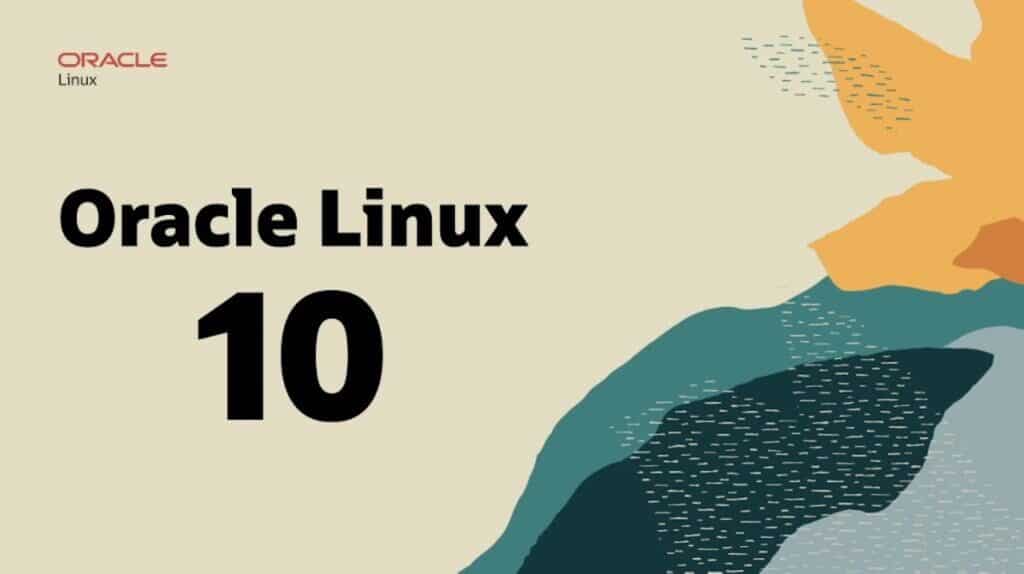On June 26, 2025, Oracle announced the general availability of Oracle Linux 10, delivering a secure, high-performance Linux distribution designed for modern enterprises operating across hybrid, multicloud, and distributed environments. Compatible with both x86_64 (Intel and AMD 64-bit) and aarch64 (64-bit Arm) platforms, Oracle Linux 10 is positioned as a powerful alternative to Red Hat Enterprise Linux (RHEL) 10—offering full binary compatibility, advanced kernel options, and zero-downtime patching.
This release marks a significant step forward in enterprise Linux, with a focus on security hardening, quantum-resistant cryptography, developer productivity, and operational resilience.
What’s New in Oracle Linux 10?
💡 Powered by Unbreakable Enterprise Kernel 8.1
Oracle Linux 10 ships with the Unbreakable Enterprise Kernel (UEK) 8.1, a highly optimized kernel built for performance and stability. Key enhancements include:
- Advanced memory management and modern file system support
- High-throughput networking enhancements
- Optimizations for Oracle workloads (e.g. Oracle Database, Exadata, OCI)
For users needing strict compatibility, Oracle Linux 10 also includes a Red Hat Compatible Kernel (RHCK)—offering 100 % binary compatibility with RHEL 10.
🛡️ Enterprise-Grade Security by Default
Security is a cornerstone of Oracle Linux 10. Notable upgrades include:
- OpenSSH enhancements: keystroke obfuscation to prevent side-channel attacks, stricter key forwarding restrictions, automatic closure of inactive sessions, and a rearchitected SSH daemon for reduced attack surface.
- Post-Quantum Cryptography (PQC): as a technology preview, Oracle introduces ML-KEM, a quantum-resistant algorithm aligned with NIST’s FIPS 203 standards. This feature is not yet recommended for production use.
- FIDO enhancements: improved handling of hardware security keys and credentials.
🔄 Ksplice Zero-Downtime Patching
Included with Oracle Linux Premier Support, Oracle Ksplice allows users to apply kernel and user-space updates (glibc, OpenSSL) without rebooting. Benefits include:
- Continuous uptime and security
- Zero disruption to applications
- Cost savings through operational efficiency
🛠️ Modern Developer Tooling
Oracle Linux 10 delivers a robust development experience:
- Updated GCC toolchains with new C/C++/OpenMP features and enhanced diagnostics
- Valkey: a high-performance in-memory key-value store that replaces Redis (fully compatible)
- Grafana updates: refreshed UI and improved access controls
- .NET support: latest APIs for networking and data access across architectures
- Enhanced support for Python (inlined comprehensions, new type syntax), Perl, Node.js, MySQL, and more
🚀 Upgrading and Deployment
Upgrades are supported via Leapp:
- Oracle Linux 8 → 9
- Oracle Linux 9 → 10
ISO images, RPMs, and container images are freely available from the Oracle Linux Yum Server, Oracle Software Delivery Cloud, and major container registries.
Oracle Linux 10 vs Red Hat Enterprise Linux 10: A Feature-by-Feature Comparison
Oracle Linux has always positioned itself as a fully compatible alternative to RHEL—but Oracle Linux 10 goes further by offering exclusive enterprise features and more flexibility.
| Feature | Oracle Linux 10 | Red Hat Enterprise Linux 10 |
|---|---|---|
| Kernel | UEK 8.1 (performance-optimized) + RHCK | RHEL 10 default kernel only |
| Binary Compatibility with RHEL | 100 % compatible | N/A (it is the reference system) |
| Zero-Downtime Patching | Ksplice included with Premier Support | Requires reboot or third-party tools (e.g., kpatch) |
| Post-Quantum Cryptography (PQC) | Preview support for ML-KEM (NIST FIPS 203) | Not yet available |
| Security Enhancements (SSH) | Keystroke obfuscation, session separation, hardened daemon | Standard OpenSSH configuration |
| Default Key-Value Store | Valkey (Redis-compatible, higher scalability) | Redis |
| Cost | Free to use; paid support optional | Subscription required for full access and updates |
| Source Code Access | Freely available | Source available with subscription |
| Cloud Integration | Native to Oracle Cloud Infrastructure (OCI) | Native to Red Hat OpenShift and hybrid cloud |
| Membership in OpenELA | Founding member | Member |
| Patch Management Tools | Oracle Ksplice, ULN | RHSM, Satellite |
Why Choose Oracle Linux 10?
- Freedom and control: Fully open source and freely downloadable, with no usage restrictions.
- Enterprise-class performance: Proven kernel and tooling for demanding workloads.
- Cost-effective: Avoids mandatory subscriptions while maintaining compatibility.
- Advanced security: From PQC to live patching and FIDO support, it’s built for future threats.
- Trusted foundation: Powers Oracle Cloud, Exadata, and Oracle Database globally.
Final Thoughts
With Oracle Linux 10, Oracle is clearly reinforcing its position in the enterprise Linux landscape—not only by maintaining compatibility with RHEL 10, but by going beyond it in terms of security, performance, developer experience, and operational flexibility.
As organizations navigate increasingly complex IT environments, Oracle Linux 10 provides a reliable and future-ready platform to run mission-critical workloads—on-premises or in the cloud.
📥 Download now: oracle.com/linux
📘 Release notes: Oracle Linux 10 Documentation
🔗 Source code: Oracle Linux on GitHub

